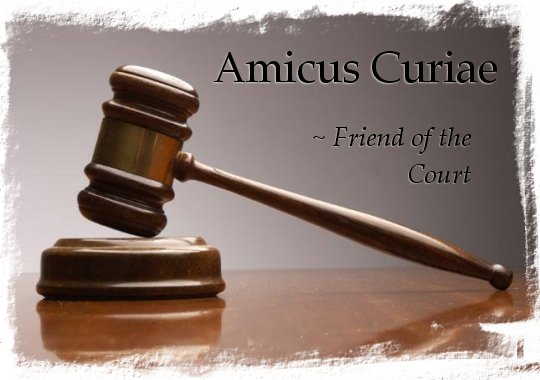Effort Mounted To Reverse Colorado Lone Pine Ban
By admin on September 4, 2013
 A substantial effort has been mounted to urge the Colorado Supreme Court to reverse the intermediate appellate court’s ruling on July 3, 2013 in Strudley v. Antero Resources Corp., which determined that Lone Pine Orders are prohibited under Colorado law. In so holding, the Strudley court reversed a trial court ruling that had dismissed plaintiffs’ case for failing to provide the court with any competent prima facie evidence of causation. We discussed the appellate court holding in a recent article, "Does the Lone Pine Still Stand?"
A substantial effort has been mounted to urge the Colorado Supreme Court to reverse the intermediate appellate court’s ruling on July 3, 2013 in Strudley v. Antero Resources Corp., which determined that Lone Pine Orders are prohibited under Colorado law. In so holding, the Strudley court reversed a trial court ruling that had dismissed plaintiffs’ case for failing to provide the court with any competent prima facie evidence of causation. We discussed the appellate court holding in a recent article, "Does the Lone Pine Still Stand?"
By way of background, Strudley is a complex toxic court action involving numerous claims by the plaintiffs premised on allegations that the defendants committed tortious acts while hydrofracking natural gas oils. The central issue in the case was whether the defendants caused plaintiffs’ alleged injuries, which the plaintiffs vaguely described as “health injuries” from exposure to air and water contaminated by “hazardous gases, chemicals and industrial waste”.
The trial court, cognizant of the significant discovery and cost burdens presented by a case of this nature, entered a Lone Pine Order requiring plaintiffs to make an early prima facie showing of exposure and causation. When plaintiffs failed to meet this burden, the trial court dismissed plaintiffs’ case. A Lone Pine Order typically requires a plaintiff to present sufficient evidence prior to full discovery to establish a foundational evidentiary showing of one or more critical elements of the claims, or to risk possible dismissal.
nature, entered a Lone Pine Order requiring plaintiffs to make an early prima facie showing of exposure and causation. When plaintiffs failed to meet this burden, the trial court dismissed plaintiffs’ case. A Lone Pine Order typically requires a plaintiff to present sufficient evidence prior to full discovery to establish a foundational evidentiary showing of one or more critical elements of the claims, or to risk possible dismissal.
In the wake of this decision, the Colorado Supreme Court has been urged by the bar to take a more expansive view of what case management tools are available under Colorado law. The Colorado Defense Lawyers Association, the Colorado Civil Justice League (“CCJL”) and the American Petroleum Institute (“API”) have all filed amicus curiae in support of the use of Lone Pine Orders in Colorado.
In particular, the memoranda of CCJI and API provide excellent surveys on the extent to which state and federal courts throughout the United States have embraced Lone Pine Orders as an important case management tool. These well-written briefs should be read by toxic tort practitioners with an interest in case management. In a well-crafted brief authored by Snell & Wilmer, CCJL argues that, if permitted to stand, Strudley will chill efforts by trial courts to exercise active case management.
As the basis for its argument, CCJL relies upon the Colorado Supremes Court’s June 2013 decision in DCP Midstream, LP v. Anadarko Petroleum Corp, in which the court announced that trial courts should consider cost-benefit and proportionality factors in managing discovery. In the decision, the court held that Colorado law reflects “an evolving growing effort to require active judicial management of pretrial matters to curb discovery abuses, reduce delay, and decrease litigation costs. The Committee Comments to the revised Rule 16 similarly recognize that “where a case is complex or requires special treatment, the Rules provide flexibility so that the parties and Court can alter the procedure.” Thus, pursuant to revised Rule 16 and Supreme Court precedent, the Court of Appeals should have upheld the use of Lone Pine.
 In arguing for a case management scheme that would permit the Colorado trial courts to apply Lone Pine, CCJL cautions that Lone Pine is hardly a hammer that should be arbitrarily or routinely invoked and is not by any means a substitute for summary judgment. In summary, CCJL argues that Strudley is bad precedent that will only obstruct the creativity of trial judges in managing their cases.
In arguing for a case management scheme that would permit the Colorado trial courts to apply Lone Pine, CCJL cautions that Lone Pine is hardly a hammer that should be arbitrarily or routinely invoked and is not by any means a substitute for summary judgment. In summary, CCJL argues that Strudley is bad precedent that will only obstruct the creativity of trial judges in managing their cases.
API’s excellent amicus brief, submitted by Steptoe & Johnson, also argues that Strudley is not consistent with the DCP Midstream. API emphasizes that toxic and mass tort cases present unique case management challenges.
Cases involving many parties on the plaintiffs’ or defendants’ side often feature broad allegations of liability that are conclusory and lacking in detail, or are based on the parties’ beliefs or dramatic human situations, rather than competent evidence. Allegations of injuries may include every conceivable injury without regard to exposure or actual liability, and without specific information relating to each plaintiff.
Thus, argues API, the parties and the courts are often required to spend enormous amounts of money, time and energy litigating these cases with respect to every element and defense, although one issue is often dispositive. When that single issue can be dealt with out front, it often results in dismissal or, alternatively, an early mediated settlement. As the New Jersey court observed in the original Lone Pine case, many defendants understandably will settle such claims, even if meritless, rather than spend the hundreds of thousands of dollars necessary for discovery. The plaintiff bar despises Lone Pine because it disincentivizes defendants from paying substantial nuisance value settlements in cases of questionable liability.
Considering the jurisprudential strength and logic of the amici curiae arguments, we believe that the Supreme Court will hold that Lone Pine is alive and well in Colorado and reinstate Judge Frick’s trial court decision.
